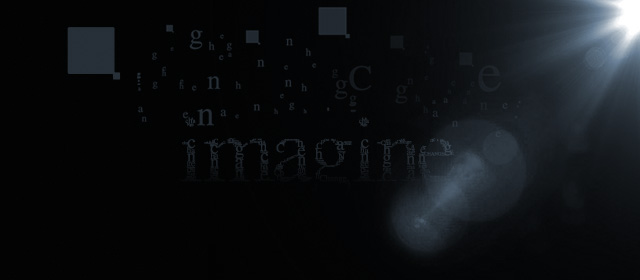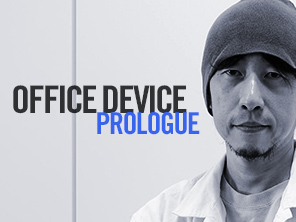OFFICE DEVICE
STORY 3/3
The "Lying Computer" That Tells "True Lies" and Brings Out One's Imagination: MITSUO ISO
January 21, 2015
Animator and screenwriter Mitsuo Iso offers Part 3 of his three main essays on the theme of "I imagined the year A.D. 2036." The importance of "lies" and the necessity of "the power of stories" explained from the perspective of someone engaged in the art of fiction.
The power of stories comes from "true lies"
The vast majority of movies are fiction—all made up. In the case of animation, as opposed to live action, even the images themselves are all made up, so you could call it the most extreme form of fiction. Whether it's drawing pictures or telling stories—it all starts out as the work of constructing lies.
However, these lies have both good and bad qualities, and, in the end, they must provide joy to the consumers—that is, the people who have been lied to. In other words, there exist some lies that create rather than destroy, value.
Animation consists of several lies other than just the storyline—of which lies relating to movement are just the start. If you were drawing them, live-action footage and CG would be 24 pictures per second, but with hand-drawn anime, we stick to around 8 to 12 pictures, because it would be difficult to draw everything if we were doing the same frame rate as other movies. We employ a technique called limited animation that makes even a choppy series of images appear to move fluidly. We draw exaggerated, false movements that differ from reality to give the illusion of proper motion with a low frame rate.
Next, there are lies relating to light and space. There's a famous anecdote about director Akira Kurosawa painting a bamboo forest in front of the characters with India ink so the plants' silhouettes would appear distinct in one of his movies. In anime, we use methods similar to this all the time. Everyone finds this out once they become pros: For some reason, a motion picture that employs lies artfully can be more real and resemble the actual thing better than one that is made without telling any lies. This is the magic of fiction.
Thus, there are lies that benefit people. There are examples outside fiction, as well, such as a nursery-school teacher telling a lie. When the teacher does this, the children yell out, "Teacher is lying!" That creates the energy of discovery, does it not? Without missing a beat, the teacher asks, "Well, then, what is it really?" and the children are all positively delighted to think the problem over. This is a type of "true lie"; putting it another way, it's the power of fiction, of stories.
True lies lead to emotional truths
However, as children advance to higher levels of education, what do you suppose happens when you can no longer hold lessons that go against science—that lie? From the start, it ends up being something utterly mind-numbing: "If you do this, then this will happen. This was discovered in the year A.D. blah-blah-blah. Class dismissed." What's the point of a maze in which you can see the exit from the very beginning?
A whole bunch of beneficial lies that bring out enthusiasm and whip up your imagination eventually arrive at a truth that is accompanied by emotion. It's interesting to you because you are searching for things on your own as you imagine the exit. This is the world of stories; it has a much longer history than science has. Presumably, humanity has been aware of the phenomenon of contradictions arising between descriptions of things using language and the real world ever since it first discovered language. In other words, wouldn't it be true to say that language and lies were both discovered at nearly the same time?
In that case, what kind of actual methods are there to use fiction in one's job? Recently, a tool called gamification has become common. In addition, it seems that more presentations are being given in a way that resembles storytelling. An awful lot of teachers also employ performances in a similar vein.
Of-course, malicious lie to deceive someone is unacceptable, but if in 2036, such “lying computer” to stimulate user is available, I’ll be glad. I am fantasizing to realize an innovation with such trend developed together with new technologies which is aligned with current culture.
PROFILE
-

-
Mitsuo IsoAnimator/screenwriter
Born in 1966 in Aichi Prefecture. The anime Dennō Coil, which he created and directed, won multiple awards, including the 29th Nihon SF Taisho Award (conferred by the Science Fiction and Fantasy Writers of Japan) and the Excellence Award in the Animation Division of the 2007 Japan Media Arts Festival (held by Japan's Agency for Cultural Affairs). Iso has also worked on such cinematic masterpieces as Only Yesterday, Porco Rosso, Neon Genesis Evangelion, and Kill Bill.
-

-
YKBXArt Director / Artist
Artist known in Japan and elsewhere for his image creations and illustrations. Recent work includes the Vocaloid opera The End, which received high praise following an international performance in November 2013.



















